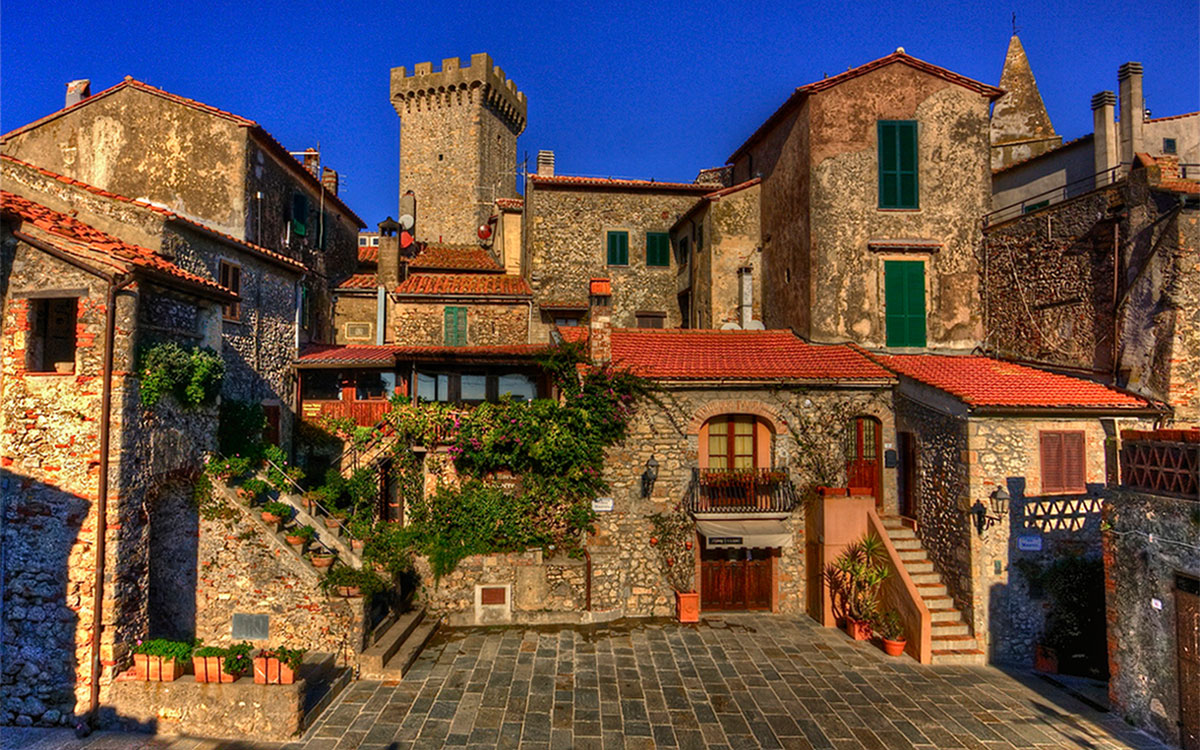Capalbio is the southernmost municipality in Tuscany.
It is one of the most suggestive villages in the Maremma. Let yourself be fascinated by its flowered balconies, the ups and downs of the narrow streets, the picturesque views between the stone houses. It will enter your heart!
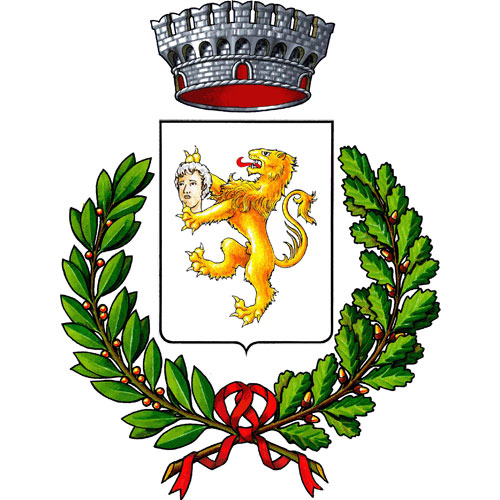
The history of Capalbio
Capalbio da caput album ("Capalbio bald head"), which also represents the symbol of the town. Even today, the coat of arms with the Sienese lion holding the bald head is recognizable on the Sienese gate.
The story quotes Capalbio for the first time in 805 on the Leonine-Carolingian Bull, through which Charlemagne donated it to the Abbey of the Three Fountains in Rome. It was under the sovereignty of the Aldobrandeschi counts, later under the Orsini family and from 1416 it was conquered by the republic of Siena.
In 1555 Siena fell under Spanish troops and Capalbio was assigned to Cosimo I de 'Medici. They were dark years for the whole territory, the Saracen incursions, malaria, and other problems caused a strong economic and demographic regression. In 1737 the Medici dynasty died out and the Lorraine took over. In 1765 Capalbio was aggregated to Manciano and in 1842 to Orbetello. With the plebiscite of 1860 it was annexed to the kingdom of Italy. This is the period that links Capalbio to the brigands' epic, from which legendary names and episodes resound, one above all that of Domenico Tiburzi, killed in 1896 in mysterious circumstances and equally mysteriously buried.
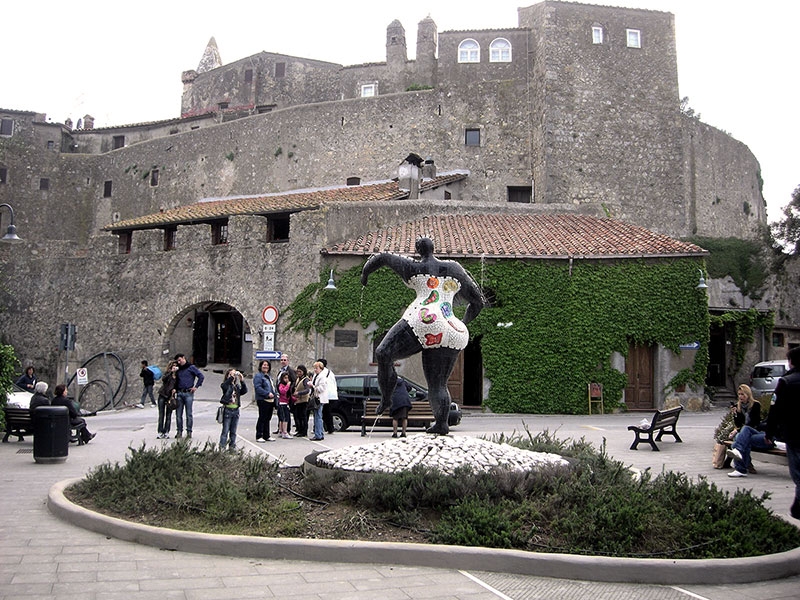
The historic center of Capalbio
The historic center of Capalbio can only be accessed on foot.
This still is now surrounded by a double wall, divided into two levels: one higher, one lower.
Piazza Carlo Giordano is the beginning of our fairytale journey. In the center is the sculpture "Nanà Fontaine" (until recently the prosperous figure "spurted" of water) by the French-American artist Niki de Saint Phalle, a taste of what you can see in his Tarot Garden , not far from where you are. Unmissable!
Enter through the Sienese door, which still has the original doors of the fifteenth century in solid wood that was closed "at sunset". On the north side, there is the city coat of arms and a plaque from 1418 (in memory of the restructuring of the walls) which Gabriele D'Annunzio translated as follows:
I'm happy Capalbio,
defended by the Sienese lion from which I am protected,
and from these first walls restored at their own expense
and from the other walls that surround the first ones,
running the years one thousand four hundred and four
beyond which the world had turned ten years and twice more.
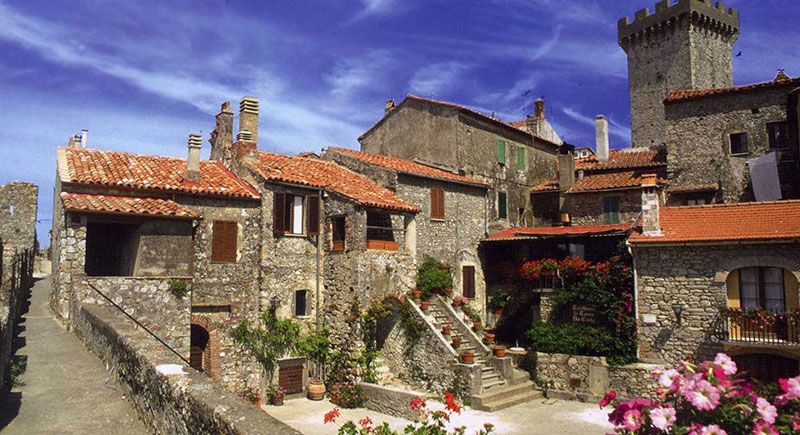
A few meters through the door you will find yourself at a crossroads, take the alley on the left, you will reach Piazza Magenta, the glimpse of all the postcards of Capalbio!
Going up the stone staircase you can walk along the route of the walls, on which you can walk the ancient patrol path in full. From here you can enjoy an open and suggestive panorama over the whole surrounding countryside, up to the sea.
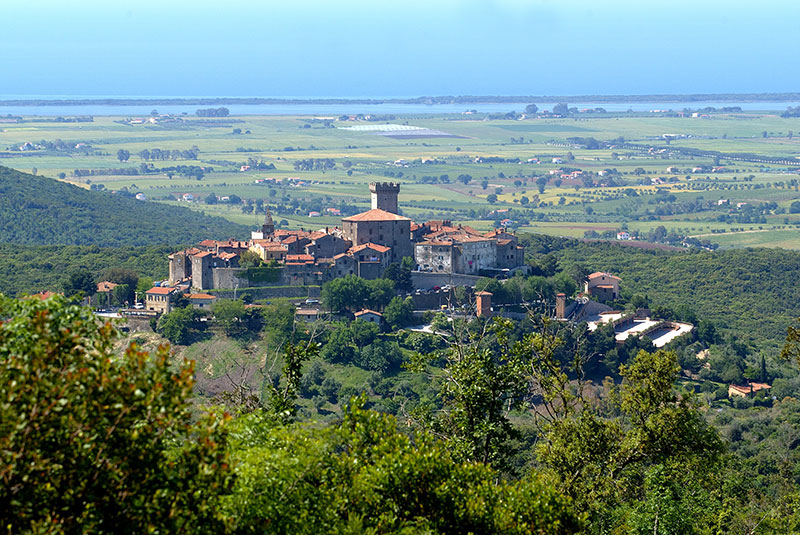
The panoramic view of Capalbio
Go down the walls where they stop, you will find another stone staircase near a beautiful closed courtyard. You will arrive at Rocca Aldobrandesca, the heart of the historic center of Capalbio and also the highest point.
It is an L-shaped fortification built in medieval times. In the XII century it passed to the Aldobrandeschi family who enlarged it. Inside there is a very valuable find: the piano that Giacomo Puccini played during his stays in Capalbio. You can go up to the tower terrace (for a fee), from which you can admire a splendid 360 ° panorama, for a few euros!
After immersing yourself in the tangle of narrow streets, arches and ancient gates, just outside the Senese gate, enjoy the walk on the lower city walls. Wait for the sunset on the benches and then dive back one last time in the historic center: in the evening, with the street lamps on, Capalbio becomes even more magical.
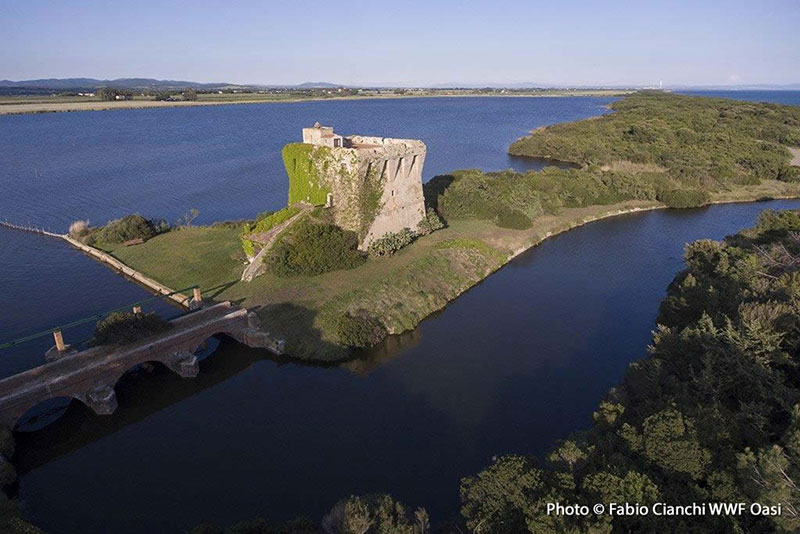
Beach and nature
The municipality was awarded the 5 sails and the first position in the Blue Guide of Legambiente-Touring Club Italiano 2007 for the protection and prudent management of its beaches, the landscape and the surrounding environment.
But the Capalbio area also has two large ... opposites: it houses the WWF Nature Reserve oasis in Lake Burano established in 1980. It was the first Oasis managed by the WWF, a wintering place for many bird species that coexists with the wild boar hunting reserve.
Another very particular animal that lives in the fauna of Capalbio is the Nymph of the corbezzolo, also known as the "vicious butterfly of Capalbio". This is the largest butterfly in Italy with a wingspan of up to 8cm.
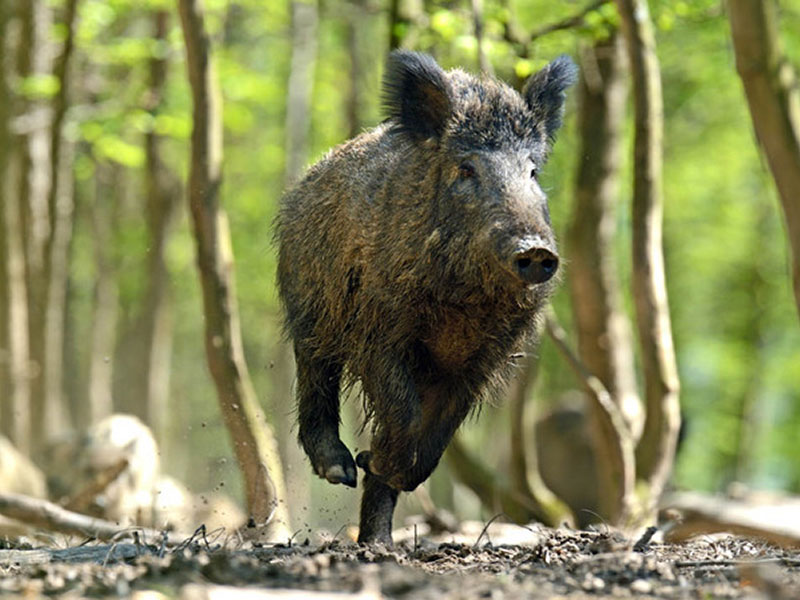
The wild boar hunt of Capalbio
When it comes to Capalbio we cannot fail to talk about wild boar hunting.
Around 1920, precisely for his passion for hunting, Capalbio was frequented by the master Giacomo Puccini. He also stayed at the Torre della Tagliata where Turandot is said to have composed.
The wild boar, present throughout the wild wooded area, is hunted with jokes organized by passionate hunters, from early November to late January.
It is the hunted or Cacciarella, in which many actors participate: the hunters waiting anxiously at the posts in the clearings at the edge of the woods, the braccaioli who move to the sound of the horn, the beaters who shoot shots and beat the spots, the canyons that explode here and there, which at times become quiet and then rekindle when the boar turns and turns in the woods, confuses the tracks, looks for a passage between the beaters to break the encirclement, turns against the dogs and attacks them with fangs.
Sometimes the boar or "cignale", as they use to call it here, falls after having fiercely fought. Sometimes he falls victorious in the stain that will still have undisputed his sovereign. Winner or loser, wild boar is always loved by the people of Maremma.
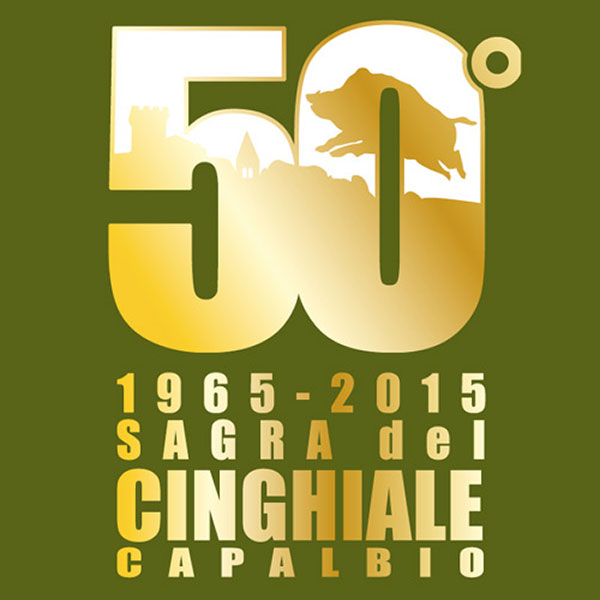
The wild boar festival of Capalbio
The "Capalbiesi" honor the proud animal in their oldest gastronomic festival that began more than 50 years ago.
The wild boar festival is a ritual event that takes place every year, in the second week of September, in Capalbio with the streets in celebration to enhance the ancient recipes of the Maremma cuisine: wild boar dishes, such as wild boar alla cacciatora, liver-killing sausages , grilled wild boar, stewed wild boar but also polenta and acquacotta.


